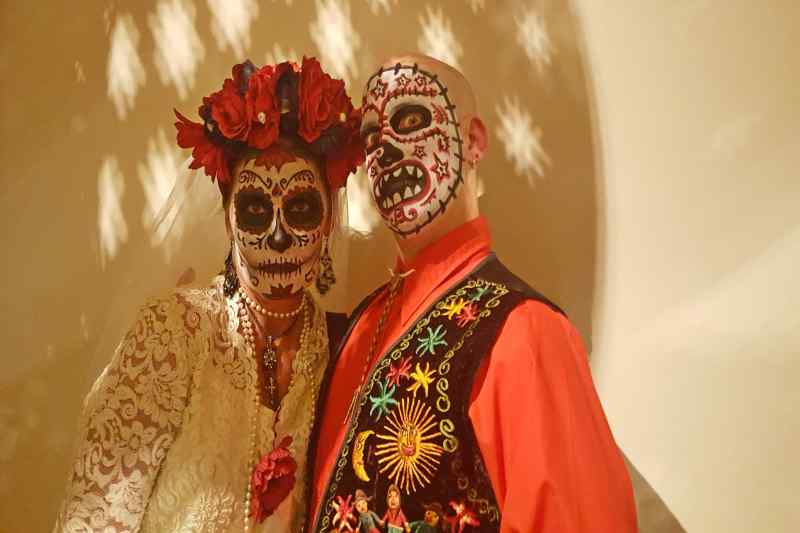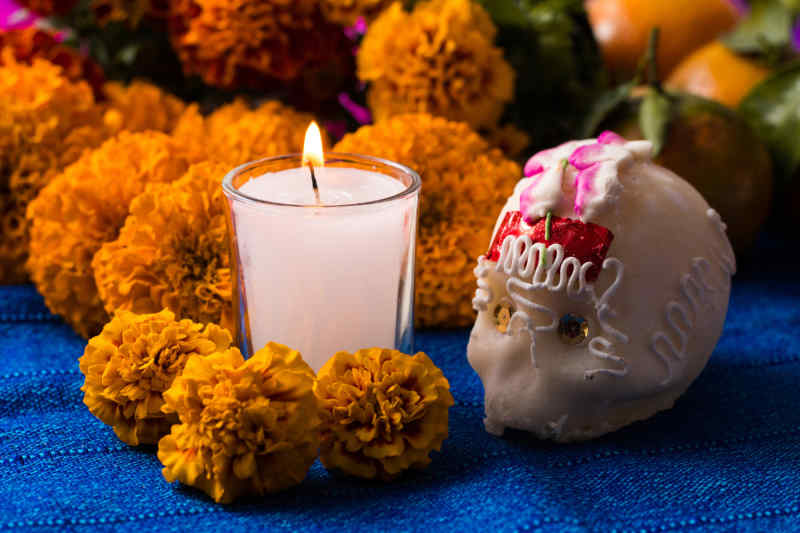By Soren Rivero
Communities across the world have different views of death that originate from their ancestral and religious beliefs. Some cultures view death as something that shouldn't be celebrated, while others honor death as an inevitable, beautiful part of life.
Día de los Muertos is an example of the latter – it is a traditional holiday hailing from Mexico in which people honor the lives of their ancestors and deceased family members. It is a splendid celebration filled with family, food, unique traditions, and more.
Interested in learning more about this popular holiday? Keep reading for more information!
What is Día de los Muertos?
Día de los Muertos is Spanish for “Day of the Dead.” It’s a holiday that widely originated in Mexico but is now celebrated in some parts across the Americas, especially those with a large Mexican population.
The holiday takes place over two days, typically November 1-2. Sometimes you’ll see the holiday extend from October 31st all the way to November 6th depending on region and community. Día de los Muertos is often confused with being the ‘Mexican Halloween’ because the two holidays share similar themes. However, the two holidays are culturally very different from each other and should not be confused as the same thing.
It is believed that the gates of heaven open up on the night of October 31st to welcome the spirits of children back into the world of the living. Adults visit on the preceding days up to November 2nd. During this period, families welcome back the souls of their deceased loved ones and ancestors by offering them gifts, food, drinks, and their undivided attention.
How Día de los Muertos Originated
Dia de Los Muertos, despite being in Spanish, is actually a mix of cultural traditions from the Indigenous peoples (Aztecs primarily) as well as Spaniards and other European cultures. It also has been influenced by European religions that include Catholicism and Christianity.
The original holiday was celebrated by the Aztecs and other Nahua people around the geographic region of Central America, primarily in what is now central Mexico. They, as mentioned earlier, believed that death was an inherent part of the human experience and tied together with their holistic view of the universe. People around this time believed that the dead would travel to Chicunamictlán (the Land of the Dead) upon leaving the Earth. They’d face numerous challenges until they can reach Mictlán, which is a final resting place. Family members would put food, drink, and other items to help the dead in their journey.
Post Colombine-Mesoamerican Day of the Dead
When the Spanish arrived in Mexico, their religious and cultural practices changed the lives of the indigenous people dramatically. Included in this were their holidays, such as the Day of the Dead.
Originally, the Aztecs celebrated Day of the Dead in late July to early August. The views of the dead and the afterlife were similar to the Christian holiday All Hallow’s Eve, so the Spaniards moved the holiday to early November. This is why Dia de los Muertos is celebrated around Halloween and All Saint’s Day.
How to Celebrate Día de los Muertos
Día de los Muertos in contemporary times is a result of the holiday evolving immensely throughout the decades. It is now even celebrated in other parts of Central and South America, and by Mexican-Americans living in other parts of the world (specifically in the United States).
The holiday invites family members to set up ofrendas (altars) where they can place pictures of deceased family members alongside candles, gifts, items, food, drink, and much else. Souls of the dead return to their family to partake in celebration, music, and dancing. Their return is an honorable one, marked by people dressing up in traditional Mexican attire. Some people may also choose to paint their faces and body in the image of calacas (skeletons) and calaveras (skulls). Others might choose to wear a skull mask instead.
Families also indulge in eating sugar-coated skulls, candy skeletons, and a sweet bread called pan de muerto (bread of the dead). Spiced hot chocolate and atole (corn-based sweet drink) are consumed throughout the festivities.
One of the most prominent images of Día de los Muertos are cempasuchitl. These bright marigold flowers are spread across ofrendas, homes, gravesites, and other celebratory places. Their very recognizable fragrance is what leads souls back to their families. Without them, Día de los Muertos would never be the same.
At celebrations, you’ll likely see handmade calacas on altars and elsewhere. These little skeletons have faces and bodies that are quite joyful. Altogether, the themes and traditions of this beloved holiday signify that death is a very integral part of the human experience– something that is not always morbid.
You can find public celebrations in areas with a large Mexican population across countries in the American continents. The most prevalent is likely the U.S., with festivities in the states of Texas, New Mexico, California, and Arizona being mostly traditional. Also in the United States, some events last throughout the day and include traditional Aztec and Mexican folk dances, Mariachi performances, hands-on art activities, and more. You might even spot a public ofrenda where you can place an image of your deceased loved one to welcome back their spirit! Canadians can find public events in major cities such as Toronto's Día de los Muertos Collective in-person event.
Wherever you find yourself celebrating Día de los Muertos, it will surely be a memorable time. Take some time to honor this holiday and find a Día de los Muertos celebration near you!












